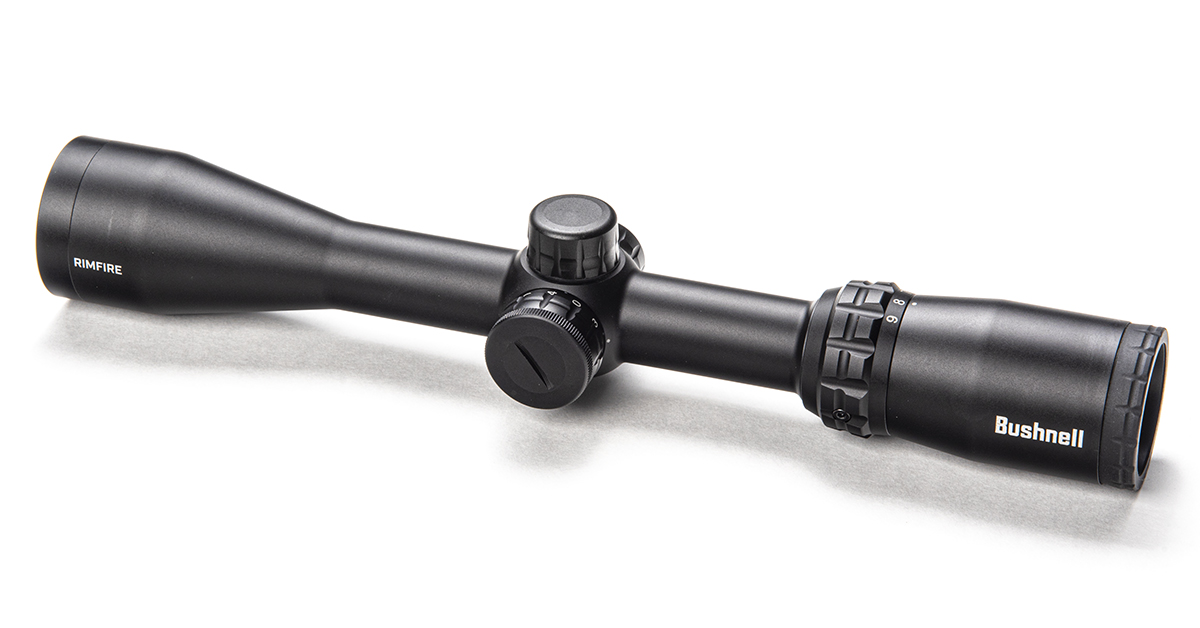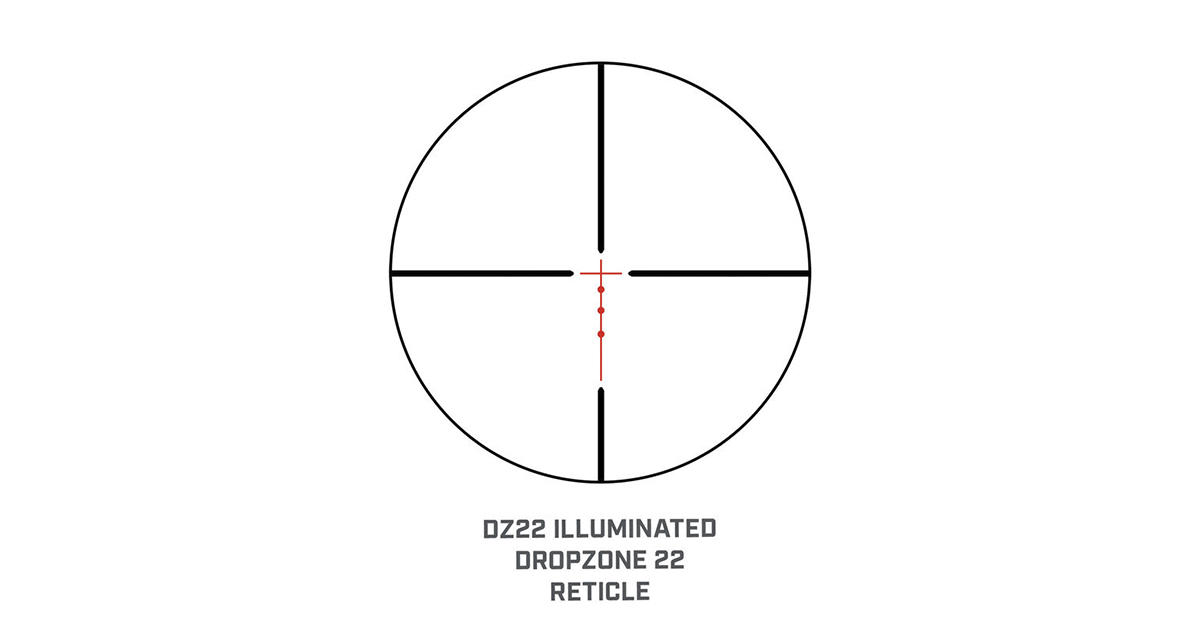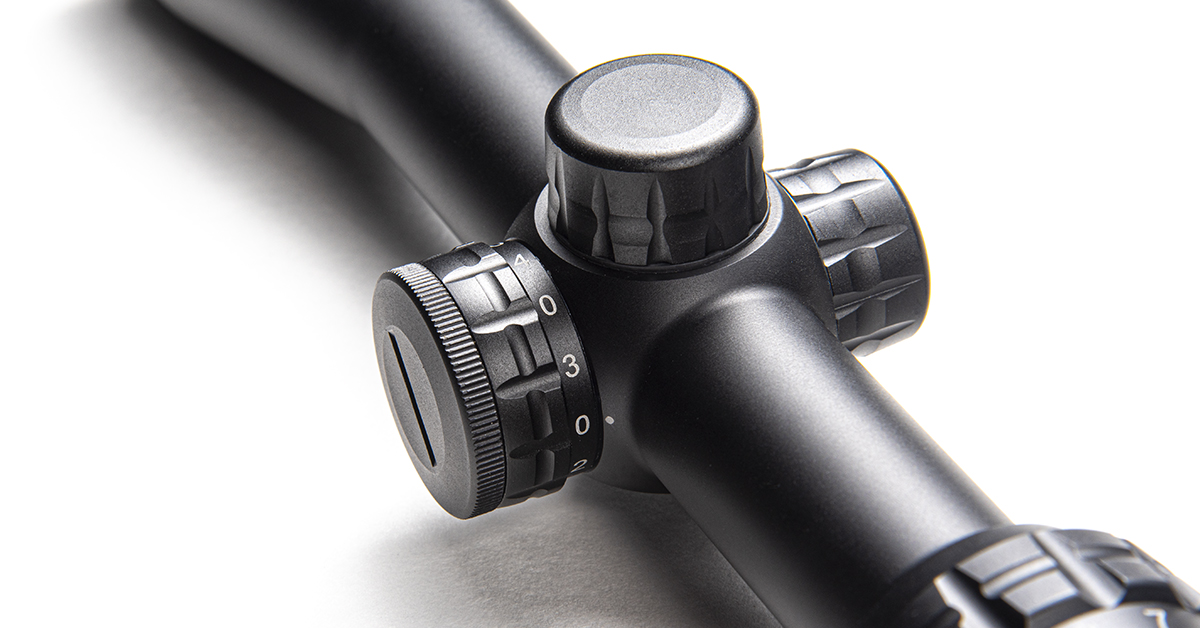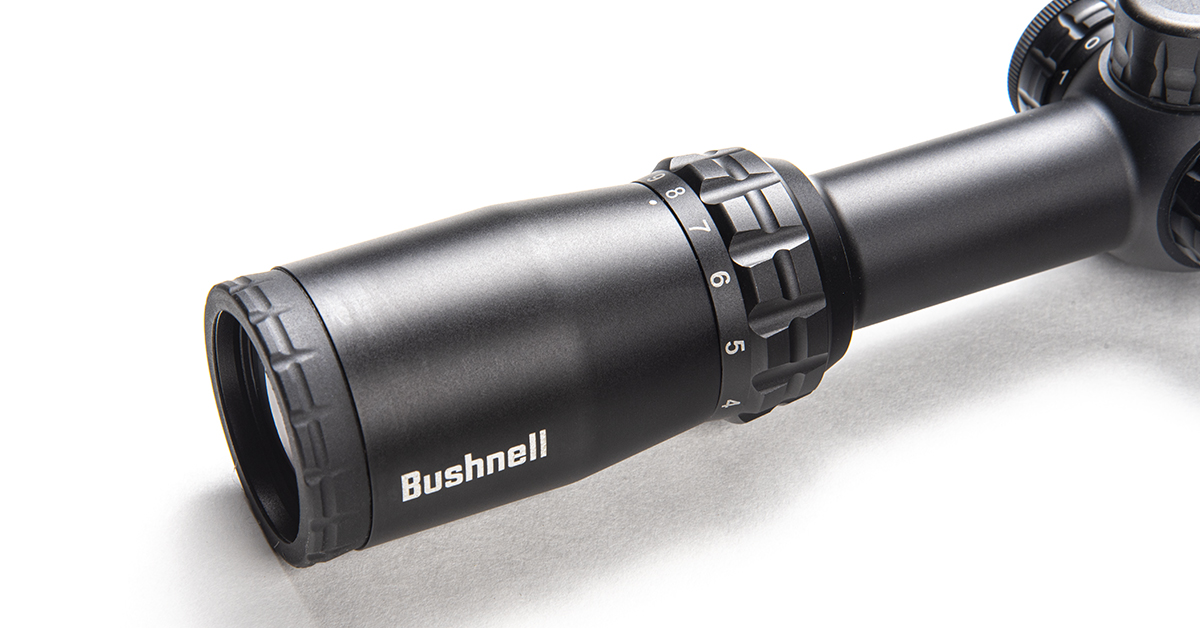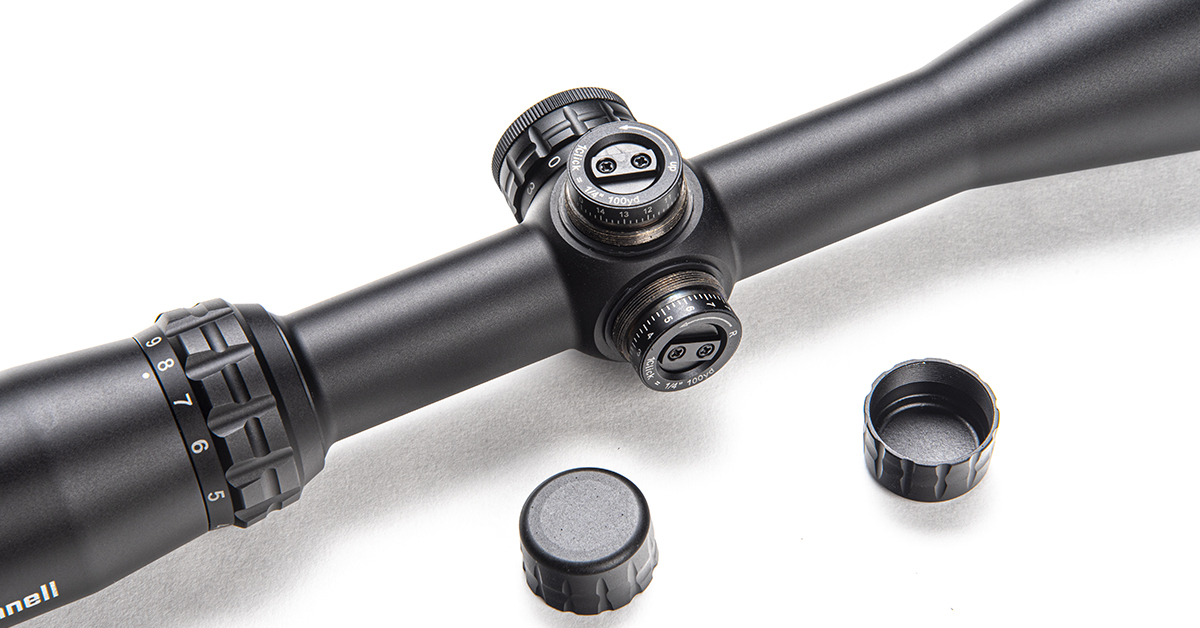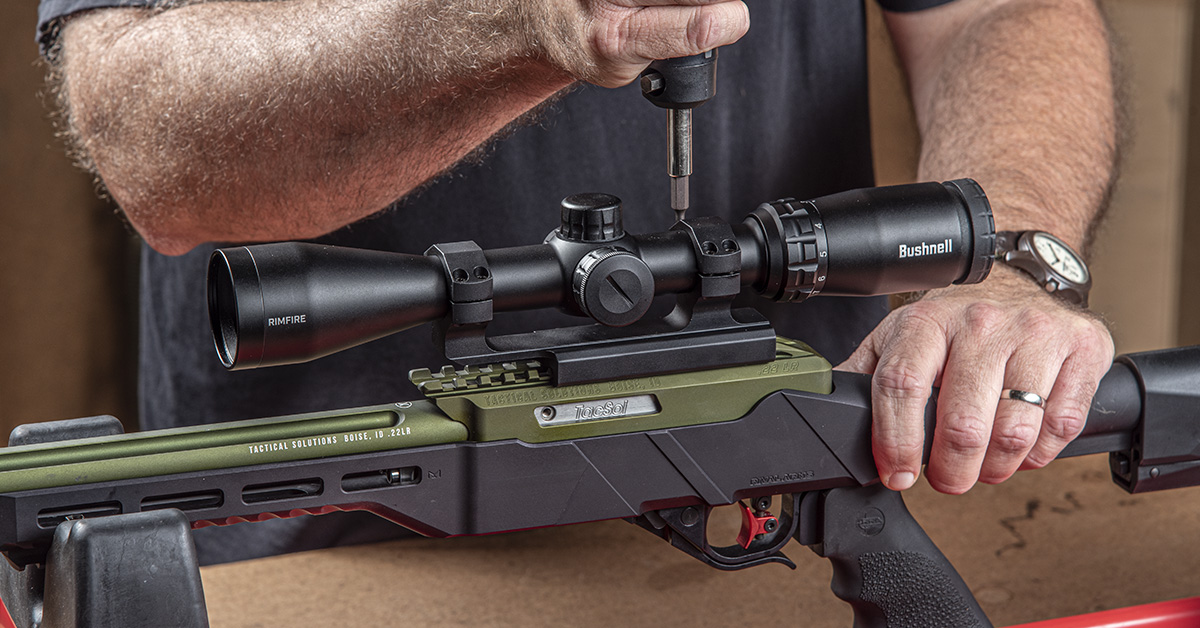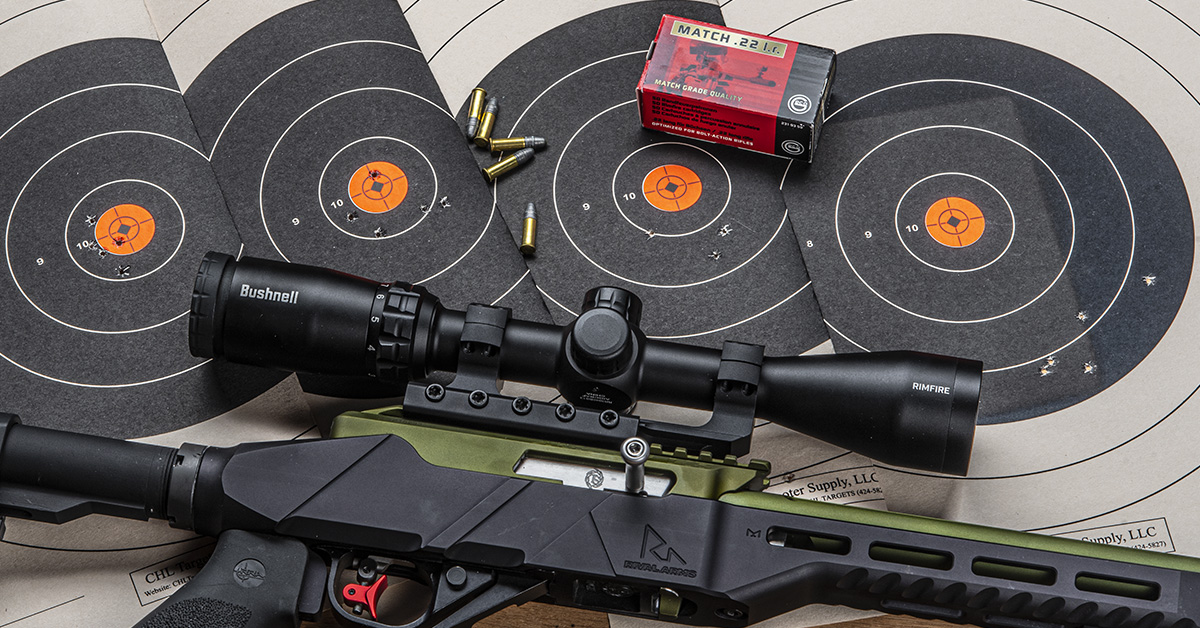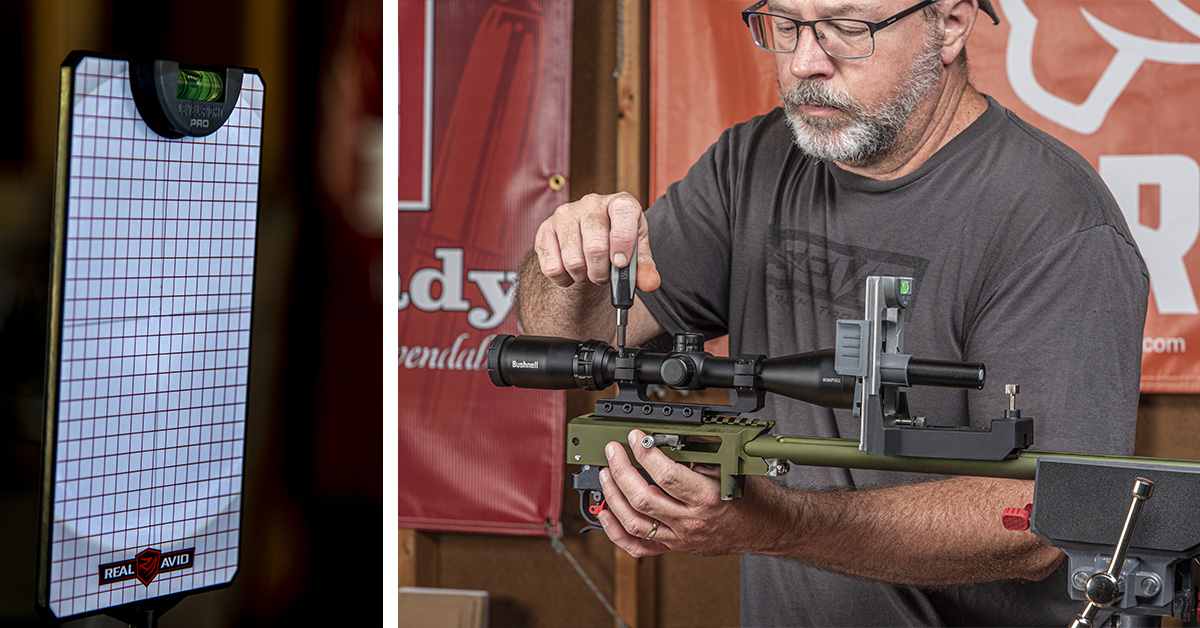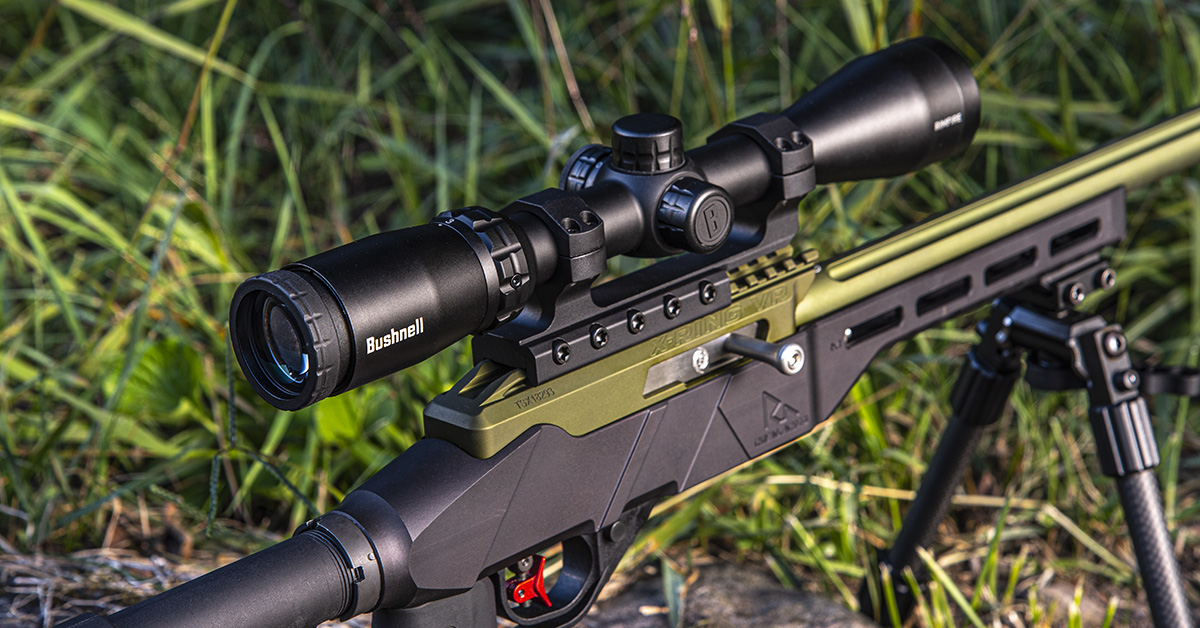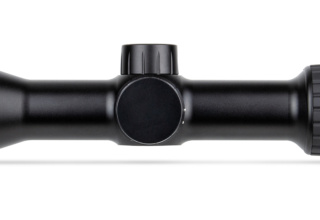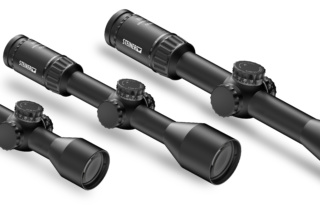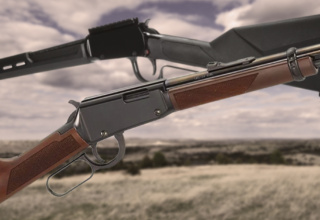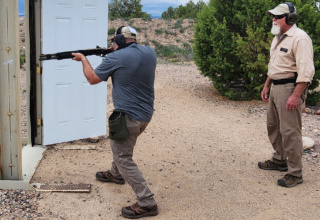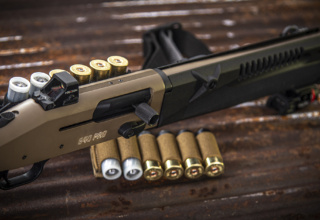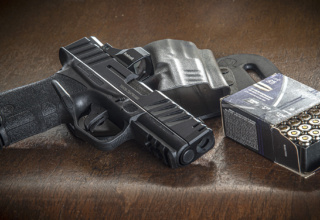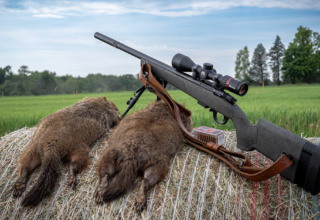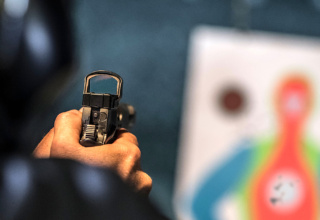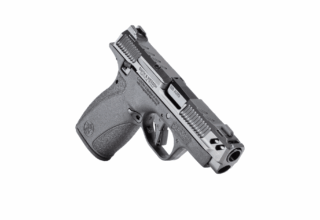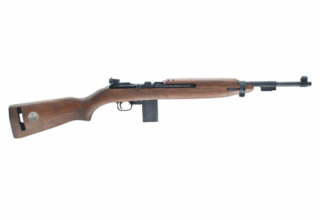Forget holdover guessing on varmints and steel—the new Rimfire 3-9×40 from Bushnell is made for serious .22LR shooters
by Rob Reaser
I love hunting squirrels with a .22. I repeat…LOVE IT! Headshots on those flighty, fidgety little buggers are a challenge. Add in a woodland environment, the occasional long shot, and the fast-paced action when the bushytails are feeling especially frisky, and you’ve got high-adrenaline fun that rivals most big-game hunts, in my opinion.
Pursuing squirrels with a .22, as with prairie dogs, gophers, groundhogs, or any small varmints, forces you to become attuned to your firearm and its capabilities. The relatively rapid bullet drop (compared to most centerfire rifle cartridges) and small target means you’ve got to learn your point of impact for distances that are well within the cartridge’s lethal range. If you use a conventional crosshair scope with no turret adjustment and no bullet drop compensation reticle, it’s easy to waste ammo. Being off even half an inch can spell the difference between a catastrophic cranial incident and a clean miss.
While the super-serious precision rimfire rifle shooters invest the time and money in high-end optics, custom barreled actions, and work through innumerable cartridge loads to ensure ragged holes at extreme distances, the average hunter hitting the squirrel woods or prairie dog fields often runs a stock gun with an “economy grade” scope, saving their money and effort on their big game hunting rigs. That requires learning the nuances of the rifle and load and learning the required holdover when distances stretch beyond the common 25- or 50-yard zero.
Here’s some good news. The folks at Bushnell, understanding that not all rimfire fans and small game hunters can or want to invest big bucks in a casual varmint rig, recently introduced a new scope specifically for the .22LR that addresses the needs of the hunter and lovers of plinking distant steel.
The new Rimfire 3-9×40 from Bushnell is a one-inch tube diameter variable power scope that hits all the right notes for a hunting or recreational-shooting .22LR rig. The one-piece aluminum tube construction houses multi-coated optics with a second focal plane reticle.
Although there are many features built into the Rimfire that shooters will appreciate, the star of the show is the reticle.
As you can see, the Dropzone 22 is an etched glass BDC reticle that Bushnell developed for the .22LR—specifically, 40-grain .22LR cartridges. The reticle is calibrated for a 50-yard zero, with aiming dots positioned for 75, 100, and 125 yards.
The reticle is illuminated and offers six brightness levels selected by the rotating knob on the left side of the scope. This is a big plus for anyone pursuing a hunting game with the Rimfire because, as we’ve all experienced, black, unilluminated reticles can be difficult to see in dim dawn/dusk light when critter action is often in high gear.
What’s different about this illumination control is that “off” is positioned between each illumination setting. Get the illumination you like best and then simply rotate the dial one click either forward or backward to shut it down. That saves you from having to spin the knob around to turn off the reticle illumination. Cool stuff!
The Rimfire delivers 3x through 9x magnification. The magnification dial is sized and textured for an easy grip and turns without difficulty while offering enough resistance to prevent rotating out of position. Ditto for the focus ring. The parallax-free distance is fixed at 50 yards.
The capped windage and elevation turrets are also easy to rotate with your fingers. One click equals 1/4-inch at 100 yds. Total elevation adjustment range is 60 MOA, providing ample maneuvering room for the .22LR’s effective distance.
Overall length of the Rimfire is 12.2 inches, with a main tube length (between the objective and ocular bell) of 5.25 inches. We had no issues establishing good eye relief (3.6 inches at 9X magnification) with this fixed-ring cantilever mount topping a custom-built 10/22.
Off to the Range
“Don’t rush” is good advice for most tasks that require precision. In setting up the Rimfire scope for this test, it was advice we failed to heed. Weather, deadlines, and a long drive to the range prompted a quick scope mounting session that proved to be unfortunate. More on that in a moment.
The ongoing challenge of acquiring ammo was another stumble in our test. The Rimfire’s Dropzone 22 reticle is calibrated for high velocity .22LR ammo with 40-grain bullets. Our meager stash of rimfire contained only remnant boxes of high velocity cartridges, but we did have a fresh brick of the German-made Geco match ammo—40 grains, but in a standard-range velocity of 1083 fps. We grabbed it, thinking that maybe the standard velocity would be “close enough” for testing purposes.
With daylight rapidly waning, we established a slightly left-of-center zero at 50 yards (left target)—sufficient to test the Rimfire’s BDC calibration. At 75 yards (center left target), the group dropped slightly. At 100 yards, the five-shot group was a good inch and a half below center (center right target) with two shots dropping completely out of the picture (assumedly weak ammo).
The big tell came at 125 yards (right target). Here, the drop was off by several inches. The lower velocity ammo is shedding serious energy at this distance, and it shows in the trajectory arc.
Again, Bushnell calibrated the Dropzone 22 reticle for high velocity (1200+ fps), and here’s the proof. Once we can get our hands on more than a smattering of high velocity .22 LR, there’s no doubt that we’ll find a load trajectory that will perfectly match this reticle’s calibration.
And that is something to keep in mind when you’re working with a BDC reticle—good engineering and testing translates to good point-of-impact performance. Still, calibrated reticles are imbued with some degree of fudge factor because there are so many variables in ammunition. They get you mighty close to accurate drop compensation, but the shooter still must experiment with different loads that not only shoot accurately (consistent point-of-impact) from a specific rifle but also have a speed and trajectory arc that correlates to the reticle. And even then, it is important to invest the time in practice to really become attuned to your setup—especially when you must shoot those in-between distances.
Another issue that really stands out here and one that many folks are not aware of is the effect of rifle cant.
Notice on the targets above that the point-of-impact shifts from left to right the further the shot distance. This is a classic illustration of what happens when a scope’s vertical reticle is not perfectly in line with the rifle’s bore line. If the scope is mounted with a cant (the reticle’s vertical line is not perpendicular to the barrel’s bore line), the shooter will slightly rotate the gun left or right when leveling the scope on target. There is a whole lot of discussion to be had on this topic, but the short version is that a scope reticle that is not perpendicular to the rifle bore cannot have the bullet’s trajectory arc intersect with the line of sight in two places (as is the case with a properly aligned scope). This means the rifle is only zeroed at one distance. The practical effect of this condition is that bullet impact will be on target at one distance (the zeroed distance) and will impact left or right of the target as distances increase or decrease relative to the zeroed distance. This is why scope alignment is so important in precision rifle shooting.
In our case, we were in a hurry and eyeballed the scope alignment instead of using the proper tools. The result is clearly evident. Our pattern indicates that the rifle is canted to the left when the reticle is vertical, resulting in an obvious left-to-right stringing of the bullet impact.
How to fix this? Easy, if you have the proper tools.
Once back home, we properly aligned the scope using the Real Avid Level Right Pro system. This system allows you to achieve perfect scope alignment on a leveled rifle to eliminate that problematic rifle cant issue.
As you can see on the left-side photo of the projection grid, our scope was rotated to the right (from the shooter’s perspective), verifying that it was, indeed, not aligned vertically with the rifle bore line. This caused the rifle to rotate left when leveling the reticle on target and thus the diagonal stringing of the shot groups as distance increased.
Check out our in-depth article on how to use the Level Right Pro to get the ideal scope alignment on your shooting rig.
Now, with some high velocity ammo and a correctly aligned scope, it’s time to head back to the range for a re-zero and fine-tuning of the Rimfire. Given the scope’s previous performance, we have no doubt the Rimfire 3-9×40 is going to deliver the drop compensation needed to make those squirrels live a hard life (or maybe just a short life)!

